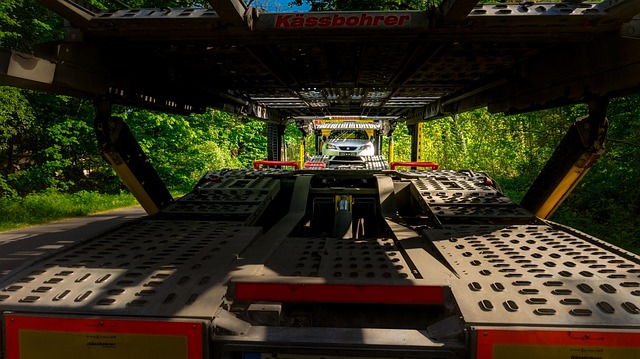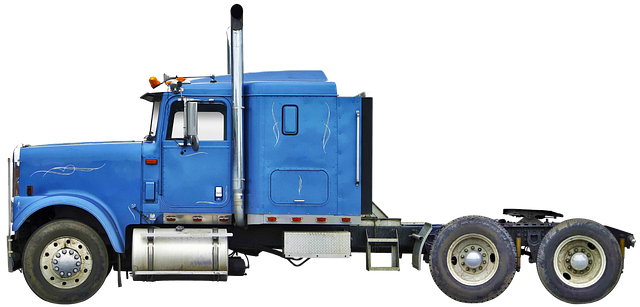Looking to register your car in California? This comprehensive guide walks you through every step, from understanding the DMV’s VIN verification process to gathering essential documents. Learn what’s required, discover the payment structure, and explore post-registration tasks. By mastering these key aspects, including efficient dmv vin verification, you’ll ensure a smooth and hassle-free registration experience in the Golden State.
- Understanding the DMV VIN Verification Process
- Gather Required Documents for Car Registration
- Steps to Register a Car in California
- Payment and Fee Structure for Vehicle Registration
- Post-Registration Tasks and Important Considerations
Understanding the DMV VIN Verification Process

The DMV VIN verification process is a crucial step in registering your car in California. It involves confirming the vehicle’s identity and history through its unique Vehicle Identification Number (VIN). When you bring your car to a designated DMV location, an inspector will conduct a thorough check using the VIN. This inspection includes verifying the vehicle’s make, model, year, and other essential details against the manufacturer’s records. The process ensures that your car meets all safety standards and has not been reported as stolen or had previous damage.
For convenience, many Californians opt for mobile vin verification services, which allow them to complete this step without visiting a DMV office. These services send a professional inspector to your location, whether it’s your home or workplace, to perform the vin inspection. This option is particularly beneficial for those with busy schedules or physical limitations, ensuring a hassle-free and efficient registration process.
Gather Required Documents for Car Registration

Before heading to the California Department of Motor Vehicles (DMV) to register your car, make sure you have all the necessary documents. The process involves several key steps, and having everything in order will save you time and potential frustration. Firstly, gather proof of ownership, which can be a vehicle title or a bill of sale. Additionally, prepare your driver’s license and any relevant identification documents. For out-of-state transfers, you might need to provide a letter from the previous state’s DMV stating that the vehicle is being registered in California.
One critical document for car registration in California is the Vehicle Identification Number (VIN) verification. This process ensures the accuracy of your car’s information and can be completed through various methods, including traditional vin inspection at a DMV office or using a mobile vin verifier for a more convenient option. The latter allows you to conduct the VIN verification from the comfort of your home or on-the-go, making it an attractive choice for those seeking a streamlined registration experience.
Steps to Register a Car in California

Registering a car in California involves several straightforward steps. First, gather all necessary documents such as your vehicle’s registration from the previous state, proof of insurance, and a valid driver’s license. Next, visit a California Department of Motor Vehicles (DMV) office or use their online services to initiate the registration process. The DMV will perform a Vehicle Identification Number (VIN) verification to ensure the vehicle’s identity and history are accurate. This step is crucial in preventing fraud and ensuring compliance with state regulations.
Once your VIN inspection is complete, you’ll need to pay the registration fee along with any applicable taxes. After processing, you’ll receive your California registration papers, and your vehicle will be officially registered in the state. Consider using a mobile vin verifier or conducting a mobile vin inspection for added convenience, as this can expedite the verification process and make it more accessible, especially if you’re busy with other commitments.
Payment and Fee Structure for Vehicle Registration

When registering your car in California, understanding the payment and fee structure is crucial. The process involves several costs, including a registration fee, vehicle taxes, and possibly additional fees based on your vehicle’s type and emission standards. One essential step before registration is the DMV VIN verification, which ensures that the vehicle’s unique identification number (VIN) matches the make, model, and year listed. This process can be completed online or at a California DMV office.
For private vehicles, expect to pay around $50 for registration, with additional fees varying from $20 to $100 based on your vehicle’s age and emission compliance. Commercial vehicles may have different rates. A mobile VIN verification service, offering convenient vin inspection, can be particularly useful if you’re busy or prefer a hassle-free experience. These services allow for quick validation of your vehicle’s details, streamlining the registration process even further.
Post-Registration Tasks and Important Considerations

After successfully registering your vehicle with the California Department of Motor Vehicles (DMV), there are several crucial post-registration tasks to complete. One vital step is to obtain a Vehicle Identification Number (VIN) inspection, which ensures the accuracy of the VIN data on your car’s registration documents. This process involves a thorough verification of your vehicle’s unique identifier by a qualified professional, often done through a mobile vin verification service for added convenience.
Additionally, you’ll want to ensure that all insurance paperwork is in order and that you have the necessary coverage before hitting the road. Keep records of your registration, insurance, and maintenance documents readily available. Regularly checking your vehicle’s maintenance schedule and adhering to California’s safety standards are also important considerations for responsible car ownership.
Registering a car in California involves several straightforward steps, beginning with understanding the DMV’s VIN verification process and gathering essential documents. By following the outlined procedures, including the required payments and post-registration tasks, you’ll be well on your way to legally operating your vehicle. Remember, the DMV VIN verification is a crucial step that ensures your car meets safety standards, so don’t skip it!



